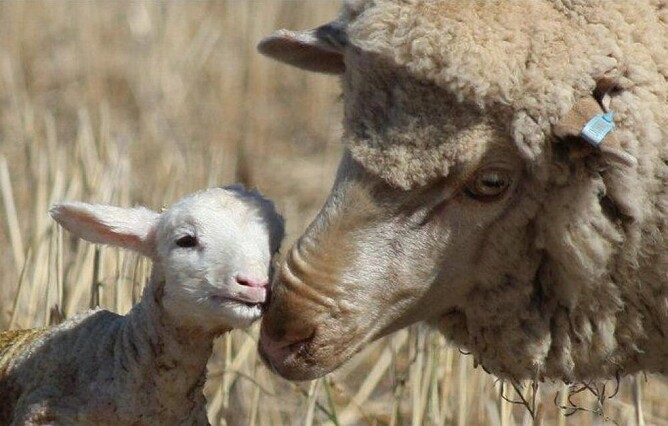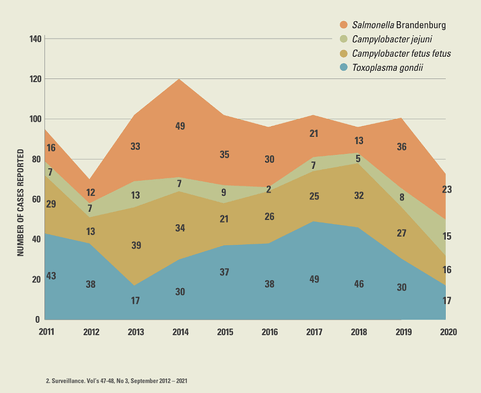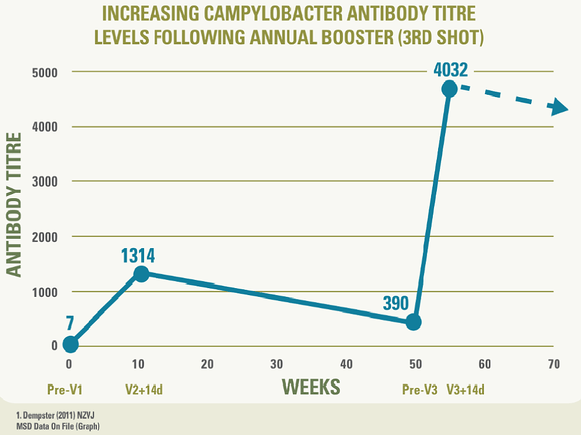Data suggests over half of M/A ewes are still naïve to Campylobacter. Is it time to rethink your vaccination plan?
Many of our farmers are already vaccinating for Campylobacter in a bid to prevent abortion storms at lambing time. But, how many of you are topping up your flocks?
With over half of M/A ewes shown to still be naïve to the bacteria, it may be time to rethink your vaccination plan to cover all of your flock (rather than just maiden ewes) and to introduce a third shot, or even an annual booster.
What is Campylobacter?
Campylobacter is a bacteria that colonise the gastrointestinal tract, causing Campylobacteriosis in sheep (and other animals). It is transmitted by ingestion of contaminated feed or water, or through direct contact with infected foetuses or placenta.
Infection is most commonly introduced to a flock by a carrier sheep.
There are two main strains of Campylobacter that affect sheep: Campylobacter fetus fetus or Campylobacter jejuni.
The bacterium can live for up to 20 days in ideal conditions.
The numbers
Campylobacter is one of the most common causes of sheep abortions in NZ, alongside Toxoplasmosis and Salmonella Brandenburg, as shown by Ministry of Primary Industries (MPI) data in the below chart:
According to MSD Animal Health:
88% of NZ farms have Campylobacter present.
52% of M/A ewes are still naive to Campylobacter.
This data would suggest that with Campylobacter being so widespread on NZ farms, it’s not a case of ‘if’ your sheep will get it, but ‘when’.
How does it present on farms?
Ewes of any age can be affected by Campylobacter.
It is often seen in late pregnancy, causing abortions with losses ranging from 20-70%.
Abortions can occur 13 to 113 days after infection, but are usually seen after around two weeks.
It can also result in stillbirths and small/weak lambs.
Ewes tend to survive and remain fertile, with natural immunity, but some may become carriers (for up to 18 months).
If you notice an increased number of wet-dries, and/or experience >25% lamb loss from mating to tailing, then you may be dealing with subclinical Campylobacter infections.
Vaccination plan
Traditionally, the Campylobacter fetus fetus strain has tended to dominate, but 2020 MPI data showed an almost equal number of cases of the two strains. It is, therefore, key to vaccinate against both strains.
Initially, ewes need two doses, 4-8 weeks apart. These will, ideally, be completed pre-mating, but the second shot can be given when the ram is taken out of the flock.
Thereafter, an annual booster is recommended.
Some farmers do not vaccinate M/A ewes, assuming they will have already been exposed to the bacteria and have developed an immunity. However, with over half of these sheep shown to still be naïve, it could be beneficial to vaccinate a wider age group.
A third shot of the Campyvax4 vaccine, given the year following the initial doses, has also been shown to lead to much higher levels of antibody for longer.
The bottom line
Relying upon environmental exposure to ‘boost’ immunity is risky.
The abortion storm you can see at lambing time as a result of a Campylobacter outbreak may just be the tip of the iceberg. You may also face financial losses through early embryonic loss - which results in dry ewes or late lambers - stillbirths, and weak lambs.
MSD claims that vaccinating with Campyvax4 can boost your lambing percentage by an average of 9% in naive flocks.
If you are keen to start, or amend, your vaccination plan for Campylobacter, then contact your KeyVet to work out the best option for your flock.



